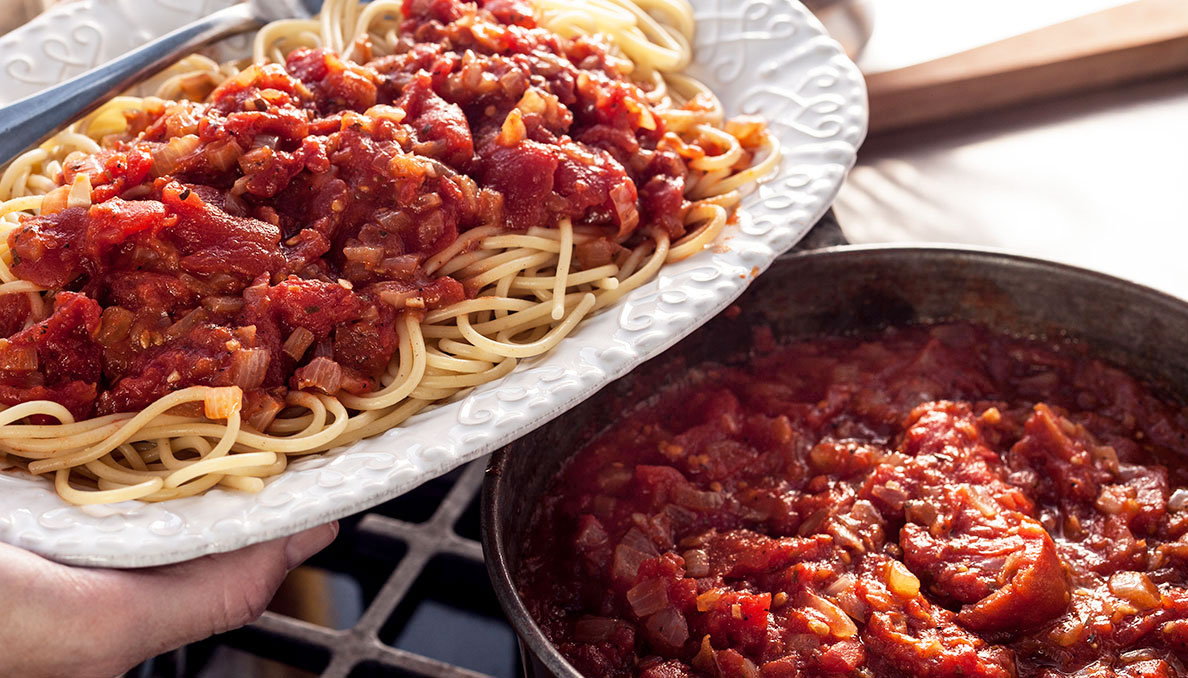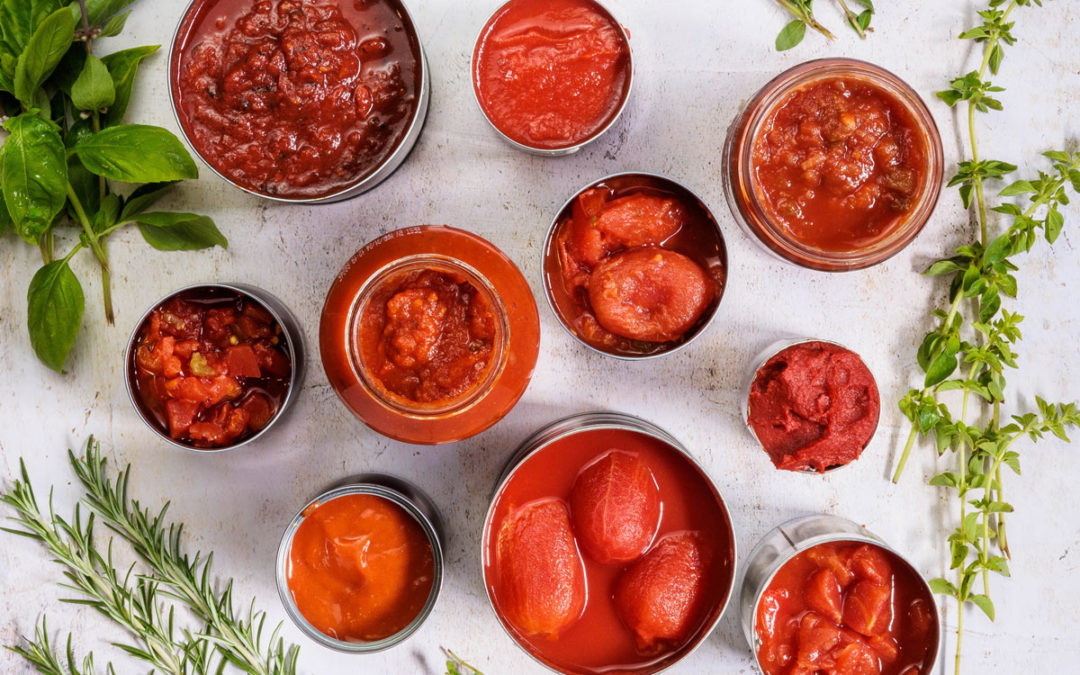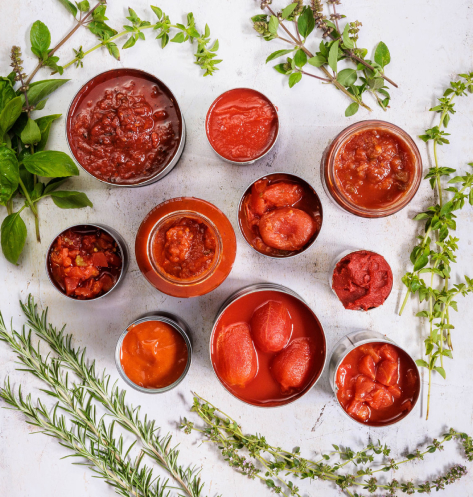
by Tomato Wellness | Jun 12, 2024 | Uncategorized
Ah, the age-old battle: red sauce vs. white sauce. While both have their place, when dining out, the crown often falls to the vibrant red. Here’s why choosing the red sauce over the white sauce at restaurants might be the tastier (and sometimes healthier) option:
Flavor Fiesta
Freshness Focus
Red sauces, typically tomato-based, often highlight seasonal ingredients. Fresh summer tomatoes burst with sweetness in a light marinara, while robust winter tomatoes lend richness to hearty ragù. White sauces, on the other hand, can sometimes feel heavy and one-dimensional.
Complexity Craving
Red sauces boast a symphony of flavors. Tomatoes offer a sweet and tangy base, while herbs like basil and oregano add a fragrant punch. Roasted garlic provides a savory depth, and a hint of chili flakes brings a welcome heat. White sauces, while creamy, often lack this depth, relying heavily on cheese and butter for richness.
Dietary Decisions
Calorie Consciousness
Red sauces tend to be lighter than their white counterparts. A simple marinara can have as little as 100 calories per serving, while a creamy alfredo sauce can pack upwards of 500. This makes red sauce a great choice for those watching their weight or seeking a lighter meal.
Nutritional Powerhouse
Red sauces are surprisingly good for you! Tomatoes are loaded with vitamins A and C, lycopene (an antioxidant linked to heart health), and essential minerals. White sauces, while offering some calcium from cheese, often lack the same nutritional punch.
Restaurant Reality
Restaurant Roulette
White sauces are notoriously tricky in restaurants. Achieving the perfect creamy texture without heaviness is difficult in large-scale preparation. Red sauces, on the other hand, are often simmered slowly, allowing flavors to develop, resulting in a more consistent and delicious dish.
Variety is the Spice of Life
Red sauces offer a wider range of options. From a simple marinara to a chunky puttanesca with olives and capers, or a spicy arrabbiata, the possibilities are endless. White sauces, while comforting, can feel repetitive, especially on extensive menus.
The Final Verdict
Choosing red sauce isn’t about vilifying white sauce. Both have their place. However, when dining out, red sauce often offers a fresher, more vibrant, and potentially healthier option. With its focus on seasonal ingredients, layered flavors, and lighter profile, red sauce allows the true talents of chefs and the quality of restaurant ingredients to shine through. So, the next time you’re faced with the red vs. white dilemma, consider giving the classic red a try. You might be surprised at the symphony of flavors that awaits!


by Tomato Wellness | Jun 7, 2024 | Uncategorized
Food waste is a global issue. Every year, tons of perfectly edible food ends up in landfills, creating environmental and economic problems. But there’s a simple solution hiding in plain sight: the canned and frozen food sections of your grocery store! These unsung heroes can be powerful allies in the fight against food waste, offering convenience, affordability, and surprising nutritional value.
The Shelf-Life Superpower
Freshness Frozen in Time
Fresh fruits and vegetables have a short window of peak freshness. They wilt, bruise, and eventually spoil, leading to wasted food and money. Frozen produce, however, is flash-frozen at its peak ripeness, locking in nutrients and flavor. It’s a convenient way to enjoy fresh-tasting fruits and vegetables year-round, minimizing waste.
Canned Champions
Canned fruits and vegetables undergo a sterilization process that extends their shelf life significantly. This means you can enjoy a variety of produce, even out of season, without worrying about spoilage. No more wilted lettuce or forgotten berries at the back of the fridge!
The Planning Powerhouse
Portion Control Perfection
Food waste often happens because we buy too much fresh produce. Canned and frozen options often come in pre-portioned sizes, perfect for single meals or smaller households. This reduces the risk of buying more than you can use before it spoils.
Meal-Planning Magic
With a well-stocked pantry and freezer, you can easily whip up healthy meals without a last-minute grocery run. Frozen vegetables can be quickly steamed and added to stir-fries or soups. Canned beans are a pantry staple, ready for dips, salads, or quick bean burgers. This helps avoid impulse buys and wasted fresh produce.
The Nutritional No-Nos (Debunked!)
Myth: Frozen and Canned Food is Less Nutritious
Modern freezing and canning techniques effectively preserve most vitamins, minerals, and antioxidants. Frozen fruits and vegetables are often picked and frozen at peak ripeness, potentially retaining more nutrients than produce that travels long distances before reaching your grocery store.
Focus on the Label
Choose canned vegetables with minimal added sodium. Opt for fruits packed in water or their own juice instead of sugary syrups. With a little planning, you can find healthy and nutritious options in the canned and frozen food aisles.
Making the Most of Your Shelf-Stable Stars
Plan Your Meals
Plan your meals around canned and frozen options. Look for recipes that utilize these ingredients to avoid impulse purchases.
Get Creative
Don’t underestimate the versatility of canned and frozen foods! Experiment with different flavors and cuisines. Leftover canned beans can be transformed into a hearty chili, while frozen berries can become a delicious smoothie.
Don’t Forget the Leftovers
Leftovers are champions against food waste! Repurpose leftover canned or frozen ingredients into new and exciting dishes.
By embracing canned and frozen options, you can become a champion against food waste. They offer convenience, affordability, and surprising nutritional value. So, the next time you’re at the grocery store, don’t overlook the power of the canned and frozen food aisles. With a little creativity and planning, you can create delicious meals, save money, and do your part to reduce food waste!


by Tomato Wellness | Jun 4, 2024 | Uncategorized

We all know the struggle. You reach for a fresh tomato, picturing a burst of juicy flavor, only to find a mushy mess or a rock-hard disappointment. Canned tomatoes, however, are a kitchen hero, offering consistent quality, affordability, and endless possibilities. But how do you use these pantry staples beyond a basic marinara? Let’s unlock the potential of canned tomatoes!
Flavorful Foundations
1. Sauces Supreme
Canned tomatoes are the base for countless sauces. Diced tomatoes simmered with garlic and herbs create a vibrant base for pasta dishes. Crushed tomatoes lend a smooth texture to creamy tomato bisques. Fire-roasted tomatoes add a smoky depth to salsas and dips.
2. Speedy Soups
Skip the chopping! Canned tomatoes are perfect for quick and flavorful soups. Diced tomatoes bring heartiness to minestrone, while crushed tomatoes create a velvety base for creamy tomato tortellini soup.
3. Stews with Depth
Add richness and body to stews with canned tomatoes. Crushed tomatoes simmered with vegetables and protein like chicken or chickpeas create a comforting and satisfying meal.
Beyond the Basics
1. Shakshuka Sensation
This North African dish features eggs poached in a spicy tomato sauce. Saute onions and peppers with diced tomatoes, add spices like cumin and paprika, and crack eggs into the simmering mixture for a unique and delicious breakfast.
2. One-Pan Wonders
Sheet pan meals are a weeknight lifesaver. Combine diced tomatoes with chicken breasts, vegetables like broccoli and bell peppers, and a simple seasoning. Roast everything on a single pan for a fuss-free and flavorful dinner.
3. Global Twist
Canned tomatoes are a chameleon, adapting to various cuisines. Use them to create a quick and flavorful Thai curry with coconut milk, vegetables, and your favorite curry paste.
Tips and Tricks
1. Don’t Drain Blindly
While some recipes call for drained tomatoes, the juice often packs hidden flavor. Use a hand blender to partially crush the tomatoes in the can, retaining some of the delicious liquid for your dish.
2. Spice it Up!
Canned tomatoes are a blank canvas. Add fresh or dried herbs, spices like chili flakes or smoked paprika, or a squeeze of citrus for a personalized touch.
3. Embrace Different Varieties
Explore the world of canned tomatoes! Diced offer a chunky texture, crushed provide a smoother base, while whole peeled tomatoes can be chopped for stews or used for stuffed tomatoes. Fire-roasted tomatoes add a smoky depth, perfect for bolder dishes.
So next time you’re staring at your pantry, remember the humble can of tomatoes. With a little creativity, you can whip up delicious, nutritious meals that are kind to your wallet and time. Embrace the versatility of canned tomatoes and unlock a world of culinary possibilities in your own kitchen!





Recent Comments